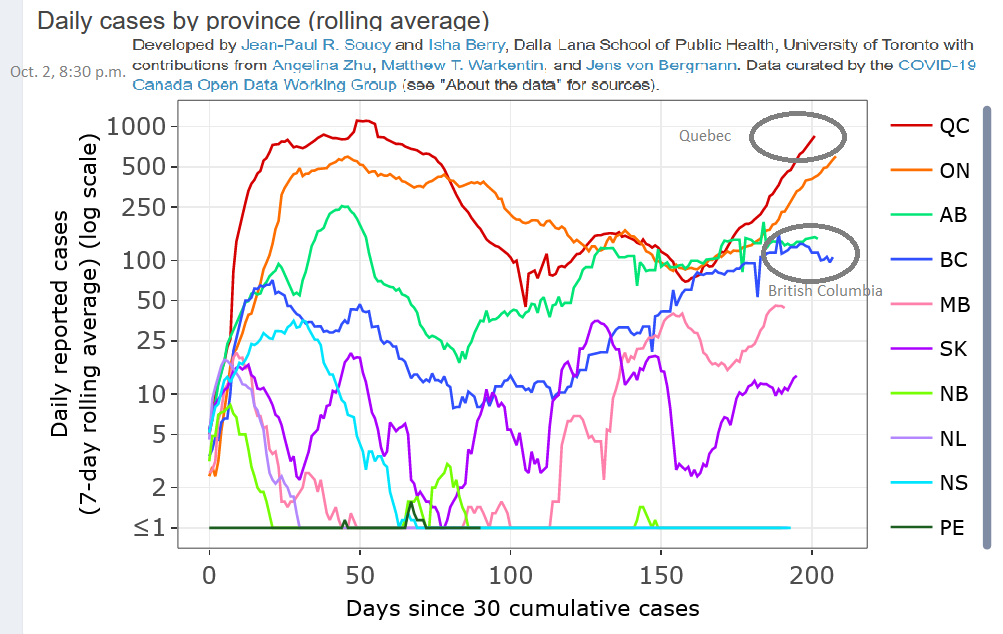
1) On the eve of Quebec’s announcement Monday that it will impose new restrictions in the #pandemic, a quarter of the province’s schools on Sunday night have declared at least one case of #COVID19 among students and staff. In this thread, I will revisit the topic of schools.
2) As of 9:44 p.m., 767 of the province's 3,000 schools have at least one infection, according to covidecolesquebec.org. On the island of Montreal, 10 schools have reported at least five cases each. But authorities last week confirmed at least 30 school outbreaks in the city.
3) However, the extent of the #COVID contagion in schools is not fully known because authorities aren't systematically screening students, as they are in Germany. Even in classes where a student has tested positive, not every pupil is screened. It differs from school to school.
4) But what we do know is that far more schools in Quebec are identifying positive cases than in Ontario, where masks are mandatory in classes from Grade 4 and up. In Ontario, 6.59% of schools have reported at least one #COVID19 case, according to the government on Friday.
5) Meanwhile, Quebec posted its third day in a row of more than 1,000 new #COVID19 cases, as well as a net increase of eight hospitalizations. It’s in this context that the government is expected to announce new #pandemic restrictions on schools and sports on Monday.
6) Montreal posted 344 #COVID19 infections Sunday, down from 411 the day before. The city’s rolling seven-day average has dipped to 154.51 cases per million population from 156.16 a day earlier. But the city’s weekly average has nearly tripled in the past three weeks. 

7) At the neighborhood level, the centre of the city is continuing to drive transmission of the #coronavirus, as the chart below makes clear. Of interest is the fact that the Plateau Mont-Royal reported a spike of 103 #COVID19 cases over the past two days. 

8) In a twist reminiscent of the first wave, emergency room overcrowding dropped Sunday. Please see the chart below. Is this a sign that some Montrealers are again scared to head to the ER for ailments that bother them? Evidently, this is something that needs to be monitored. 

9) As worrisome as Montreal's predicament might be, it’s much worse in the provincial capital, which reported a seven-day average of 20.53 cases per 100,000 residents Sunday. Quebec City is grappling with at least 80 active outbreaks, including a major one at a cardiac hospital.
10) Quebec City is also declaring far more #COVID19 deaths than Montreal, which added one fatality to its toll of 3,483, almost double that of Ireland’s (1,810). Really wish things could be better everyone. Please practice #PhysicalDistancing and wear a mask. End of thread. 

• • •
Missing some Tweet in this thread? You can try to
force a refresh




